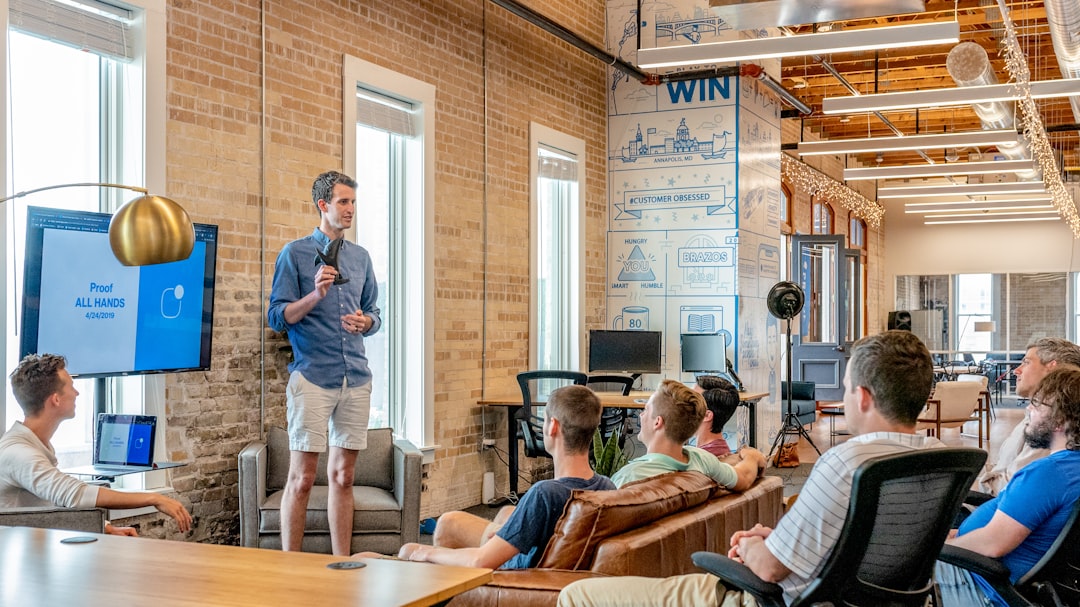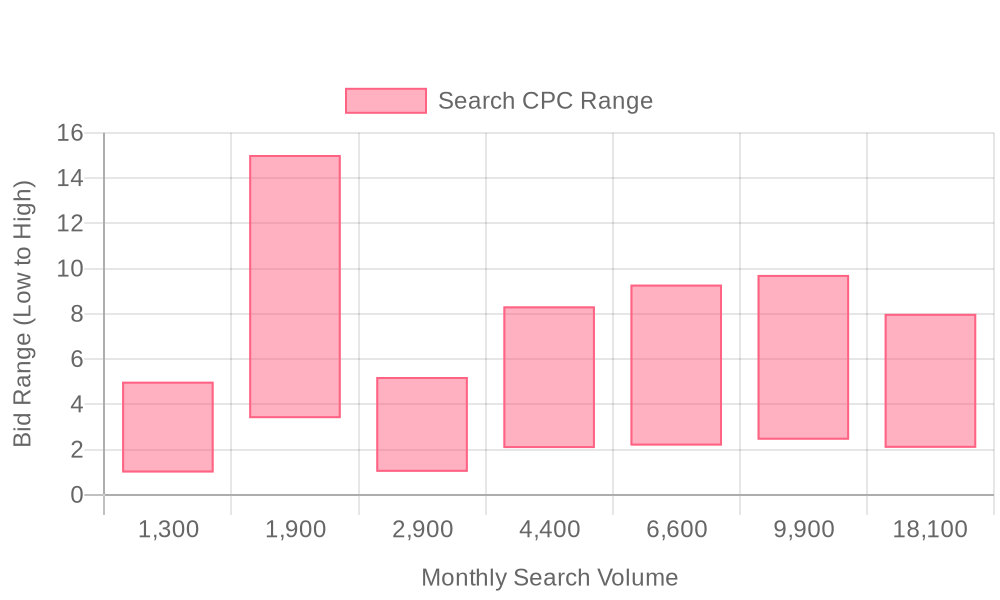
Supercharge your lead generation with a FREE Google Ads audit - no strings attached! See how you can generate more and higher quality leads
Get My Free Google Ads AuditFree consultation

No commitment
Supercharge your lead generation with a FREE LinkedIn Ads audit - no strings attached! See how you can generate more and higher quality leads
Get My Free Google Ads AuditFree consultation

No commitment
Supercharge your lead generation with a FREE Meta Ads audit - no strings attached! See how you can generate more and higher quality leads
Get My Free Google Ads AuditGet My Free LinkedIn Ads AuditGet My Free Meta Ads AuditFree consultation

No commitment
Supercharge your lead generation with a FREE Google Ads audit - no strings attached! See how you can generate more and higher quality leads
Get My Free Google Ads AuditFree consultation

No commitment
Navigating the intricate world of digital advertising can be particularly challenging for real estate photographers seeking to captivate their target audience effectively. Challenges such as missing high-value prospects or delayed engagement can significantly impact potential opportunities. While local presence and word-of-mouth remain valuable, modern solutions, including Google Ads, offer a direct path to reaching high-intent clients precisely when they're searching for real estate photography services. By utilizing advanced audience tracking and timely follow-up, photographers ensure their ad spend targets real decision-makers with real intent, thus bridging the gap between initial awareness and conversion.

Real estate photography professionals experience significant lead growth when their digital marketing strategy is grounded in actionable data and audience insights. The right approach not only attracts active buyers and agents but ensures that every advertising dollar is allocated to the most valuable prospects.
A well-structured Google Ads campaign for real estate photography begins with understanding the unique demands of the market, where timing, location, and visual appeal drive engagement. By leveraging intent signals and optimizing for local search, photographers can connect with decision-makers right when they’re ready to book. For more insights on capturing market demand, see the intent signals guide.
By following a structured, data-driven framework, real estate photography businesses can consistently generate high-quality leads, improve conversion rates, and achieve measurable growth through Google Ads and digital marketing for photographers.

Real estate photography professionals operate in a results-driven market where timing and specialized expertise directly impact business growth. Google Ads delivers unmatched precision by reaching users who are actively searching for real estate photography services, ensuring that campaigns focus on genuine prospects rather than broad, less relevant audiences.


Growth in real estate photography advertising depends on precisely targeting vertical keywords tied to specialized services. By focusing on offerings such as aerial photography, 3D virtual tours, or twilight shoots, you can capture demand from property managers and realtors actively searching for unique visual solutions. This vertical keyword approach uncovers new account segments that generic campaigns often overlook, enabling your team to build granular targeting strategies and unlock untapped revenue streams. Google Ads keywords provides actionable examples of high-converting terms for this niche.
Analyzing competitor campaigns is essential for market differentiation. Leverage tools like SEMrush to dissect ad copy, budget allocation, and landing page content across your market. This process reveals content gaps and identifies which formats or service bundles are underrepresented, particularly where data-driven models indicate immediate buyer needs. When you integrate advanced visitor identification and intent monitoring, you discover not just which companies are clicking on competitor ads but also which segments are actively evaluating new photography partners. Solutions such as Sona Identification support real-time visibility into high-value web visitors for smarter targeting.
Placement strategies should extend beyond traditional digital channels. Real estate-specific directories, forums, and industry newsletters often attract a hyper-targeted audience of brokers, developers, and property managers. By placing ads or sponsored posts on these platforms, you access communities that generic digital marketing rarely penetrates. This approach ensures your brand is present where new demand emerges, especially during peak listing seasons or market shifts.
Content retargeting using rich media portfolios is a proven tactic for moving prospects through the buying journey. When your data reveals a prospect has engaged with certain property types or visual formats, dynamic retargeting serves them relevant project examples matching their interests and buying stage. For more tactics on segmenting by buying stage, explore our guide on stage segmentation. As leads progress, dynamic audiences update automatically, ensuring no opportunity is missed and that high-value prospects always see the most relevant creative. This level of personalization drives higher engagement and shortens the sales cycle, positioning your real estate photography services as both authoritative and responsive in a competitive market.
Audience segmentation in real estate photography marketing ensures campaigns capture the unique motivations of every property stakeholder. By defining segments such as residential agents, commercial brokers, and luxury property managers, marketers create messaging that resonates with each group, resulting in higher engagement and more qualified leads.

| Industry | Keyword | Monthly Search Volume | Competition Level | Low Bid | High Bid |
| Real Estate Photography | real estate photography pricing | 1300 | LOW | 0.99 | 5 |
| Real Estate Photography | real estate photos | 1900 | LOW | 3.39 | 15.02 |
| Real Estate Photography | real estate drone photography | 2900 | MEDIUM | 1.02 | 5.21 |
| Real Estate Photography | real estate photography near me | 4400 | LOW | 2.07 | 8.33 |
| Real Estate Photography | real estate photographer near me | 6600 | LOW | 2.18 | 9.29 |
| Real Estate Photography | real estate photographers | 9900 | LOW | 2.44 | 9.72 |
| Real Estate Photography | real estate photography | 18100 | LOW | 2.08 | 8 |
Effective keyword strategy for Google Ads in real estate photography is rooted in a balanced blend of broad and niche search terms. Top-performing campaigns align with search behaviors such as "luxury property photography," "real estate photography near me," and "commercial property photographer [city]." These keywords capture high-intent prospects whose search indicates a readiness to hire and a clear understanding of their needs. By focusing on both high-volume generic terms and specific service-driven phrases, marketers maximize reach while maintaining conversion-focused precision. For a deeper dive into keyword selection and campaign structure, Ylopo’s guide provides a breakdown of effective terms for real estate ads.
Addressing common client questions and misconceptions directly within keyword targeting is essential for relevance and engagement. For example, incorporating terms like "how much does real estate photography cost" or "same-day real estate photographer" not only attracts searches from motivated buyers but also improves ad relevance scores and click-through rates. Strategically targeting FAQ-based queries reduces friction in the buyer’s journey and builds immediate trust. This approach encourages prospects to move from search to inquiry, as they find answers and solutions directly in the ad experience.
Careful management of negative keywords is critical for filtering unqualified traffic and protecting ad budgets. Excluding terms such as "free real estate photos," "DIY property photography," or "virtual staging software" ensures that only potential clients with genuine business needs engage with the ads. This sharpens the campaign’s focus, increasing the likelihood of connecting with decision-makers ready to invest in professional services. We’ve covered advanced strategies for optimizing Google Ads spend in the Google Ads ROI guide.
Prioritizing keywords that signal urgent or local demand significantly improves lead quality and speed to conversion. Bidding on terms like "urgent real estate photographer [city]" and "real estate photography available today" puts ads in front of clients with immediate needs. Connecting CRM and ad platforms streamlines the process further: as enriched audience data syncs, keyword bids and targeting dynamically adjust to focus on the highest-value accounts. This integration ensures that marketing teams can shift spend in real time based on actual in-market activity, not just static audience assumptions, driving both higher conversion rates and lower acquisition costs. To see how this can work for your campaigns, try a demo.

Effective real estate photography ads begin with precision in keyword selection. Service-specific keywords, such as “real estate photographer” or “property photography services,” paired with location modifiers, enable campaigns to reach homeowners, agents, and property developers actively seeking visual marketing. Predictive analysis can surface trending property types or niches in the local market, helping marketers insert long-tail queries like “luxury condo photographer in Denver” or “drone real estate photography Los Angeles,” which consistently outperform generic terms in both cost efficiency and lead quality.
Synchronizing these keywords with onsite content ensures messaging consistency across the funnel. When Google Ads targeting for real estate aligns with a company’s web pages and blog content, the resulting relevance signals improve Quality Scores and ad positions while reducing wasted clicks. Real Estate Keywords offers a practical breakdown of search trends that drive high-performing campaigns.
Dynamic audience and keyword syncing, driven by unified data, keeps campaigns optimized as local real estate trends shift, allowing teams to react quickly to emerging opportunities and maximize buyer precision. Platforms like Sona Audiences are designed to identify and reach the most relevant segments based on evolving search intent.
Ad copy for real estate photography must directly address common challenges faced by brokers and sellers: speed, visual differentiation, and ROI. Headlines like “Sell Listings 30% Faster with Pro Photos” or “Boost Buyer Interest with HDR Virtual Tours” intercept intent-driven searchers with immediate value propositions. Including credentials, awards, and client counts within descriptions instills trust, and referencing specific turnaround times or satisfaction guarantees gives prospects confidence to engage.
Remarketing data further enhances copywriting by highlighting the pain points or interests of returning site visitors. Adaptive messaging, supported by real-time CRM alerts, ensures that time-sensitive offers—such as “Book this week for discounted twilight shoots”—reach prospects at the optimal decision-making moment. For more insights on elevating retargeting effectiveness, check out our guide on Intent-Driven Retargeting.
This blend of intent-driven language, social proof, and urgency consistently increases response rates, especially when ad creative is dynamically updated to reflect current market demand or newly acquired accolades.
A seamless transition between ad creative and landing page is critical for real estate lead generation. The landing page should immediately echo the promise and style of the ad, using before-and-after galleries, client testimonials, and success metrics (“Photos helped close 18 listings last quarter”) to reinforce authenticity. Matterport’s Marketing Tips provides a deeper look at how visual proof can drive conversions.
Incorporating rich visual proofs and interactive portfolios not only showcases expertise but also addresses buyers’ need for tangible evidence of results.
Conversion-focused calls-to-action, such as “Schedule a Consultation” or “Get a Custom Quote,” should be prominently placed and functional on both mobile and desktop interfaces. Streamlined forms, click-to-call buttons, and live chat options accommodate diverse user preferences. Mobile optimization is non-negotiable, as a significant share of real estate searches originate from smartphones. Data-driven landing page design, informed by analytics and user behavior, enables ongoing iteration for higher conversion rates. To see how you can optimize your ad spend for ABM strategies, schedule a walkthrough via Optimize Ad Spend.
Continuous improvement in real estate photography campaign performance relies on robust data analysis at every funnel stage. By modeling conversion paths across different touchpoints, marketers can isolate what drives prospects from initial click to booked shoot, allowing for targeted budget reallocation and creative testing. One analysis in Neil Patel PPC Guide explores this further.
Integrating CRM and advertising data creates a closed feedback loop: offline bookings, repeat clients, and high-value referrals are automatically attributed to the originating ad or keyword. This approach uncovers true ROI, surfaces hidden patterns, and informs audience refreshes or negative keyword additions. Dynamic audience syncing ensures that leads progressing through the pipeline continue to receive relevant messaging, while those who have converted or dropped off are excluded from future spend, reducing budget waste and boosting campaign efficiency. For a personalized approach to advanced attribution and revenue tracking, start with Sona Attribution.
Leading real estate photographers are driving growth by building a strong digital presence that extends well beyond static portfolio sites. They engage, educate, and convert high-value prospects by layering advanced audience targeting with personalized content and timely retargeting. The key is to meet potential clients at every stage of their decision process, delivering the right message as their intent signals evolve.
Promoting educational materials through targeted retargeting strategies is an effective way to address common client queries and decision hurdles. For example, when a prospective realtor visits your service page but hesitates to book, a follow-up campaign that spotlights a brief guide on "How Professional Photos Boost Listings" can nudge them closer to conversion. By deploying real-time audience tracking, you can identify which visitors are most engaged and re-engage only those showing genuine interest, ensuring ad spend is focused on prospects with the highest conversion potential. One analysis in Google Ads guide explores this further.
Utilizing segmented audiences enables the introduction of ancillary photography services, such as virtual tours or drone imaging, to those already interested in standard property shoots. Segmentation ensures campaigns remain dynamic, responding to user behavior and funnel position. Platforms like Sona Audiences are designed to keep your retargeting lists current with dynamic audience updates, ensuring prospects see messaging that aligns with their latest interests.
Forging partnerships with real estate businesses unlocks new referral streams and collaborative advertising opportunities. By sharing campaign and lead data, photographers and brokerages can build predictive models that anticipate the needs of shared clients. For more insights on revenue attribution strategies in collaborations, check out our guide on splitting revenue.
Localizing advertisement efforts is critical for maximizing engagement in regions with high real estate activity. Precise geo-targeting allows you to prioritize budget and creative resources in zip codes or neighborhoods where property turnover is highest. By continuously tracking in-market behavior and shifting spend dynamically, your campaigns home in on real opportunities instead of casting a wide net. Real estate ad strategies provides a deeper look at this trend.
Mastering Google Ads for real estate photography hinges on a blend of strategic keyword selection, granular audience segmentation, and creative optimization. By leveraging data-driven insights and advanced audience management, you ensure every marketing dollar is focused on the prospects most likely to convert. To see how you can take the next step, start with free Sona onboarding and position your brand as the go-to partner for real estate professionals seeking high-impact visual content.
Mastering Google Ads for real estate photography isn’t just about visibility—it’s about turning clicks into clients and maximizing your return on every ad dollar.
Throughout this guide, we’ve explored how targeted keywords, compelling ad copy, and strategic bidding can help you stand out in a competitive market. By focusing on high-intent audiences like real estate agents and agencies, you can ensure your photography services get the attention they deserve.
Imagine effortlessly attracting high-quality leads who value your work and are ready to book. With the right Google Ads strategy, you’re not just running campaigns—you’re building a pipeline of opportunities that grow your business.
Ready to put these insights into action? Start a free trial to experience Sona's platform and its capabilities.
Best practices include adopting a data-driven approach, utilizing tailored keyword strategies, aligning landing page designs and messaging, implementing performance optimization techniques, and integrating cross-channel methods.
Create effective ads by building targeted keyword lists, developing compelling ad copy, designing effective landing pages, and implementing data-driven optimizations.
Allocate your budget intelligently by prioritizing high-value prospects using precise targeting and audience insights to ensure every dollar is spent effectively.
Target intent-rich phrases such as 'commercial property photographer near me' and 'luxury real estate photo packages,' and use vertical keywords tied to specialized services.
Measure success by unifying ad performance data with CRM insights, using advanced conversion tracking, and analyzing campaign performance through predictive modeling and attribution models.
Join results-focused teams combining Sona Platform automation with advanced Google Ads strategies to scale lead generation

Connect your existing CRM

Free Account Enrichment

No setup fees
No commitment required

Free consultation

Get a custom Google Ads roadmap for your business
Join results-focused teams combining Sona Platform automation with advanced Meta Ads strategies to scale lead generation

Connect your existing CRM

Free Account Enrichment

No setup fees
No commitment required

Free consultation

Get a custom Google Ads roadmap for your business
Join results-focused teams combining Sona Platform automation with advanced LinkedIn Ads strategies to scale lead generation

Connect your existing CRM

Free Account Enrichment

No setup fees
No commitment required

Free consultation

Get a custom Google Ads roadmap for your business
Join results-focused teams using Sona Platform automation to activate unified sales and marketing data, maximize ROI on marketing investments, and drive measurable growth

Connect your existing CRM

Free Account Enrichment

No setup fees
No commitment required

Free consultation

Get a custom Google Ads roadmap for your business
Over 500+ auto detailing businesses trust our platform to grow their revenue
Join results-focused teams using Sona Platform automation to activate unified sales and marketing data, maximize ROI on marketing investments, and drive measurable growth

Connect your existing CRM

Free Account Enrichment

No setup fees
No commitment required

Free consultation

Get a custom Google Ads roadmap for your business
Over 500+ auto detailing businesses trust our platform to grow their revenue
Join results-focused teams using Sona Platform automation to activate unified sales and marketing data, maximize ROI on marketing investments, and drive measurable growth

Connect your existing CRM

Free Account Enrichment

No setup fees
No commitment required

Free consultation

Get a custom Google Ads roadmap for your business
Over 500+ auto detailing businesses trust our platform to grow their revenue
Our team of experts can implement your Google Ads campaigns, then show you how Sona helps you manage exceptional campaign performance and sales.
Schedule your FREE 15-minute strategy sessionOur team of experts can implement your Meta Ads campaigns, then show you how Sona helps you manage exceptional campaign performance and sales.
Schedule your FREE 15-minute strategy sessionOur team of experts can implement your LinkedIn Ads campaigns, then show you how Sona helps you manage exceptional campaign performance and sales.
Schedule your FREE 15-minute strategy sessionOur team of experts can help improve your demand generation strategy, and can show you how advanced attribution and data activation can help you realize more opportunities and improve sales performance.
Schedule your FREE 30-minute strategy sessionOur team of experts can help improve your demand generation strategy, and can show you how advanced attribution and data activation can help you realize more opportunities and improve sales performance.
Schedule your FREE 30-minute strategy sessionOur team of experts can help improve your demand generation strategy, and can show you how advanced attribution and data activation can help you realize more opportunities and improve sales performance.
Schedule your FREE 30-minute strategy sessionOur team of experts can help improve your demand generation strategy, and can show you how advanced attribution and data activation can help you realize more opportunities and improve sales performance.
Schedule your FREE 30-minute strategy session





Launch campaigns that generate qualified leads in 30 days or less.
